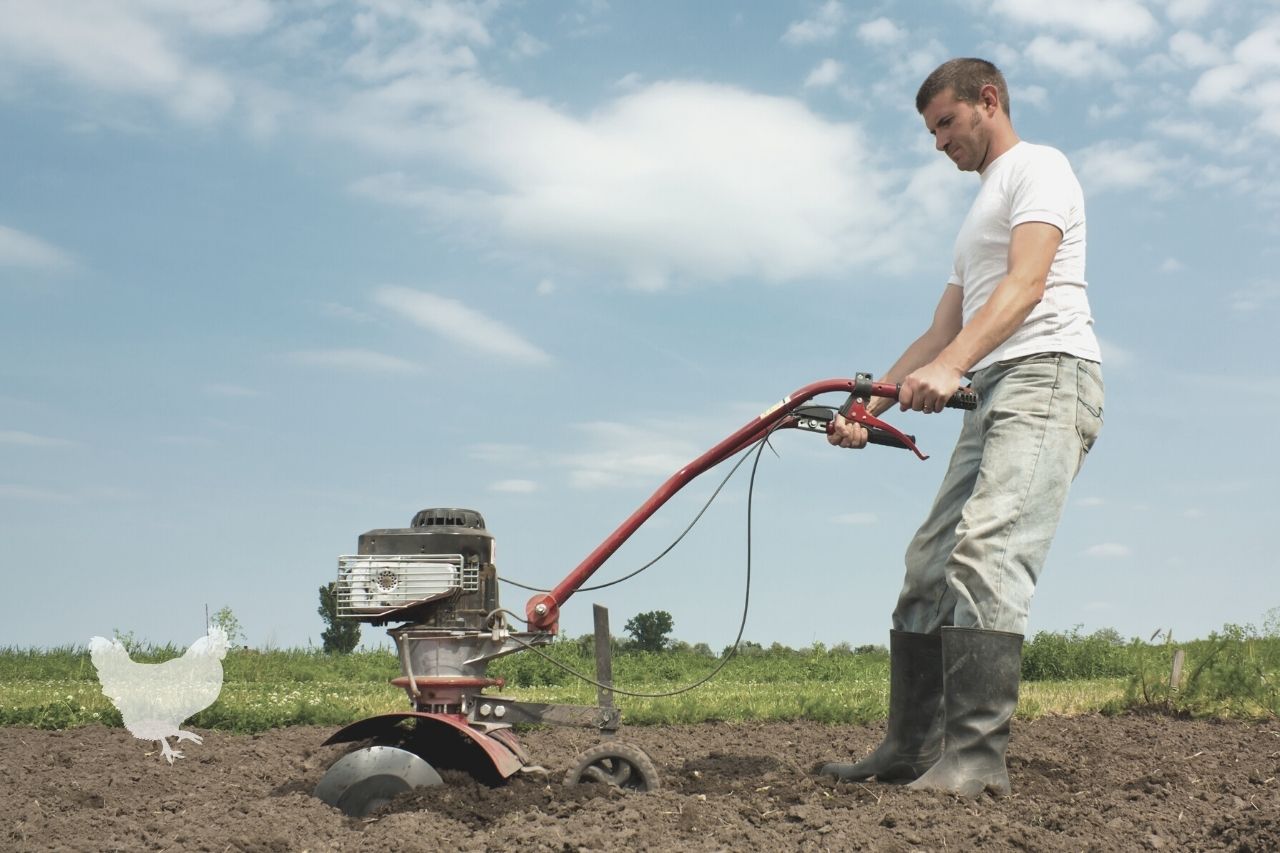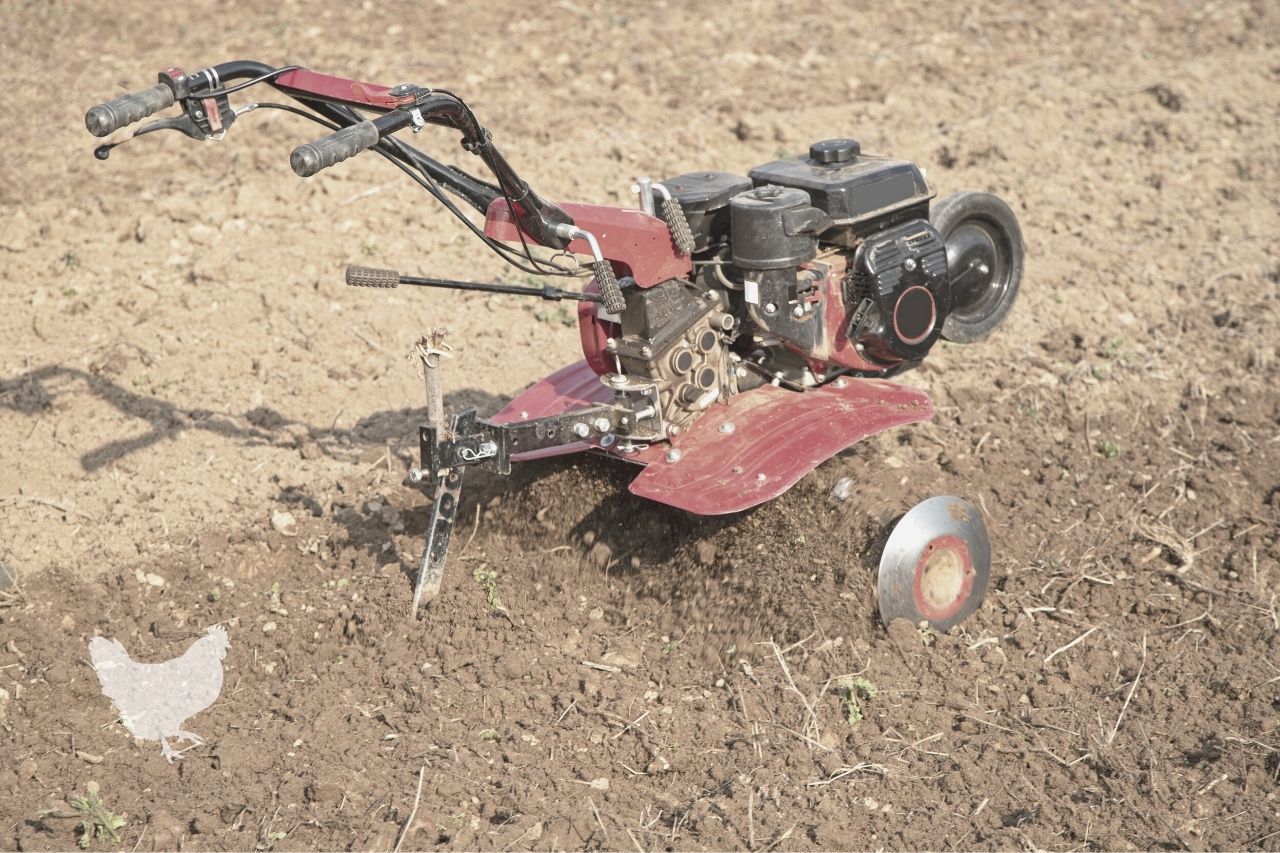Using a cultivator to prepare an area of land for planting is a fast and effective method. It has several advantages, including loosening the soil, aeration, breaking down clumps of dirt, and is a good way to incorporate fertilizers and nutrients. But when is the best time to use a cultivator or your land, and can you use one when your garden is wet?
What You'll Learn Today
How Wet Is Too Wet To Till?

When the days of spring start getting longer, and you’re chomping at the bit to get out on your land, it can be mighty tempting to bring out the big machines and start preparing the ground for the growing season.
But wait! If the soil conditions aren’t right, you may be doing more harm than good.
The dirt must have the right amount of moisture in it before you start attacking it with a cultivator. This is because tilling overly wet soil has some adverse and long-reaching effects not only on the soil itself but on any plants you try to grow in it.
Generally, tilling the soil is beneficial. It can open it up, allowing for better drainage and oxygen flow to plants’ roots, and it helps to add amendments like compost.
It also assists with leveling the ground and making it smooth by allowing you to remove roots, rocks, or other debris that may have accumulated.
Creating a fine tilth lets the roots of tender seedlings grow easily and for the plants to flourish.
So why is tilling wet soil so bad? In a word – compaction. When you try to till wet ground rather than adding air, the high level of moisture actually has the opposite effect; you effectively churn the ground into mud soup that, as it dries, turns into something more akin to rock with virtually no air in it at all.
Solid ground like this doesn’t allow for good drainage, oxygen flow, or the tender young roots of your seedlings to bury down into the earth and grow.
But how do you know if you should wait or till?
How to test your soil
- Take a garden spade and dig a small hole of approximately 6-inches in depth.
- If water floods into the hole, it is too wet!
- If it doesn’t, take a handful of soil from the bottom of the hole.
- Now squeeze it in the palm of your hand, creating a ball.
- Open your hand and poke the ball with a finger from your other hand.
- If the ball crumbles, the soil has the correct moisture content for tilling. If your finger simply makes a hole in the ball, it is too wet.
- If your finger doesn’t penetrate the ball, then you need to add some soil amendments to improve the texture.
- If the soil wouldn’t form a ball when you squeezed it and simply fell apart, then it is too dry.
In this video, you will see how to test the soil to see if it is too wet to till:
Optimum Water Content
The ideal amount of water in the soil varies depending upon soil type. But soils when a good amount of organic matter within them resist compaction far better than clay or loam soils will.
Other Methods To Prepare Soil For Planting When Wet
Using a cultivator or rototiller isn’t the only option when preparing your soil for planting, especially if it’s very wet.
A hoe is an excellent alternative and will allow you to remove weeds from the surface. A garden fork will turn over the top few inches of soil, then, if you need to remove stones, level the ground, or remove clumps, you can use a hard tined rake.
If you have plants you want to put in right away, simply dig a hole with a trowel or hand fork that is deep enough to transplant each one. Then add a little compost before refilling the hole and tapping down gently around it.
To make seedbeds for planting out seeds, use your rake to agitate the top few inches of soil, and providing the ground isn’t too wet, you can still sow the seeds but cover with some potting compost rather than mud.
If you live in a very damp area, till your soil in early fall and incorporate some good plant matter to help open up its texture. This gives the earthworms and other microorganisms the time needed to break it down and helps prevent the soil from being compacted when you start planting in the spring.
How Dry Should Soil Be Before Tilling?
Soil that is very dry is also not ideal for tilling. To begin with, the cultivator will have a tough time getting its blades dug deeply enough into the hard ground, and if it does, the likelihood is that it will produce a tremendous amount of dust.
If there has been no recent rainfall, it’s a good idea to water the ground you want to till the night before. This allows the water to be absorbed and any excess to drain away.
In “how to test your soil” above, you can see what consistency the dirt should be before you begin tilling.
What Are The Consequences Of Tilling Wet Soil?

As we have seen above, tilling wet soil can cause problems such as:
Compaction
This is where soil particles are squashed too close together and adhere to one another. Imagine the ground becoming very hard like concrete, and this is what compaction does.
Plow pan
This condition is often experienced by farmers who plow their fields when they are too wet. The blades of the plow going through the soil turn over the top layer, but the weight of the machine also causes the soil under the blades to be compressed and smoothed so that as it dries out, it forms a solid layer of compacted soil beneath the surface which has been plowed.
The same thing can happen when you use a tiller on wet ground. The problem with this is that water cannot drain away, and roots cannot go down deep enough to properly support plants.
Lack of oxygen
There is very little space for oxygen in compacted soil. This is a problem because the roots of plants need oxygen to remain healthy.
Inability to hold water and nutrients
Again, the ground cannot absorb and hold water and nutrients that benefit plants with compacted soil. Instead, the water tends to run off of the land, which can cause other problems.
Poor plant growth
Any plants that are grown in compacted soil will have difficulty establishing a strong root system. This is vital for the plant’s health as it is how it absorbs moisture and many of the nutrients required for good growth.
Conclusion
Trying to use a cultivator on land that is wet is not a good idea. You may get away with it in soil that has a good level of humus and an open, easy to drain structure, but in clay-type soils, using a cultivator should be avoided until the soil has had the chance to dry out.
If you do have heavy clay or even sandy soil, adding plenty of compost and plant matter will help the soil structure over time.
It can seem like a good idea to add sand to clay soil to help it drain, but this has the effect of turning it into something more akin to concrete! So avoid at all costs.
If you must cultivate when the land is wet, use less impactful methods such as a hoe or a rake to lightly and gently turn over the soil.
To discover more about using a cultivator, or to read articles on a wide variety of other farmstead topics, head on over to our website.